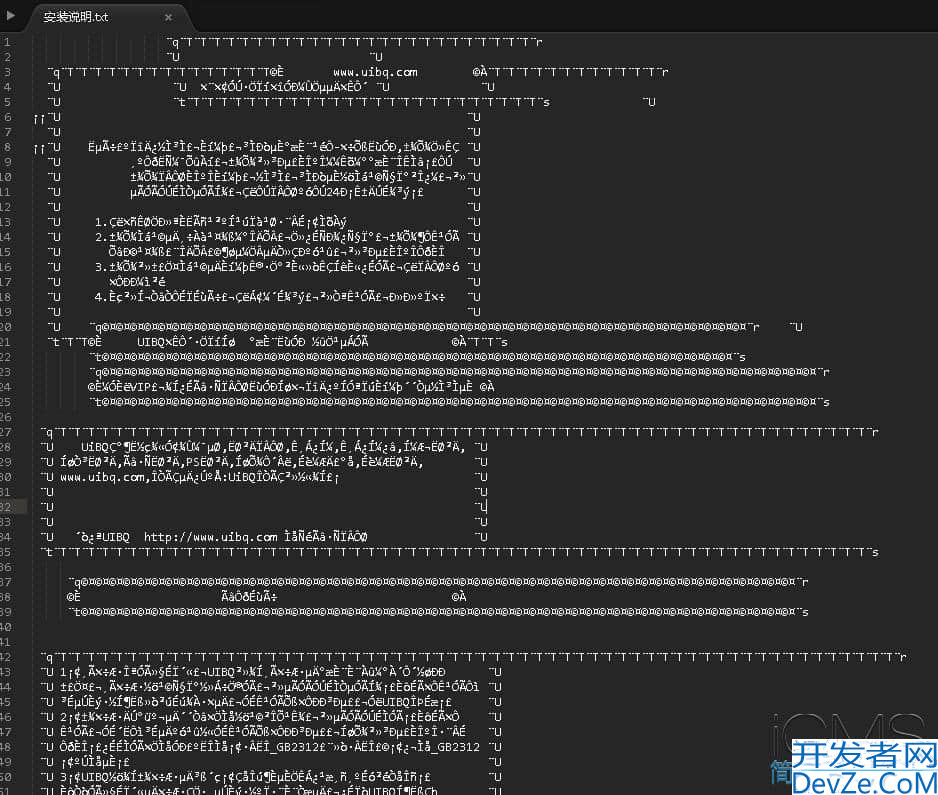Java实现中断线程算法的代码详解
目录
- 一、项目背景详细介绍
- 二、项目需求详细介绍
- 三、相关技术详细介绍
- 四、实现思路详细介绍
- 五、完整实现代码
- 六、代码详细解读
- 七、项目详细总结
- 八、项目常见问题及解答
- 九、扩展方向与性能优化
一、项目背景详细介绍
在多线程编程中,线程的创建、运行和终止是并发控制的核心。Java 提供了 Thread.interrupt() 与 InterruptedException 机制,允许线程之间通过“中断标志”进行协调,优雅地请求某个线程停止其当前或未来的工作。但实际开发中,许多初学者对中断机制存在误解:
- 误以为调用
interrupt()即可强制终止线程; - 忽略
InterruptedException,导致中断信号被吞噬; - 未在业务循环或阻塞调用中及时检查中断状态。
正确使用线程中断不仅能避免强制停止带来的资源不一致,还能让线程根据业务需要决定退出时机,实现“可控关闭”与“快速响应”并发任务终止请求。本项目将以“Java 实现线程中断算法”为主题,深度剖析中断机制原理,构建多种场景演示,帮助大家系统掌握如何优雅地中断线程及应对常见陷阱。
二、项目需求详细介绍
核心功能
演示如何在:
- 忙循环 中检查并响应中断;
- 阻塞调用(
Thread.sleep、Object.wait、blockingQueue.take等)中捕获并处理InterruptedException; - I/O 操作(
InputStream.read)中响应中断;
提供一个通用的 InterruptibleTask 抽象类,封装中断检查和资源清理框架,子类只需实现 doWork() 方法。
实现一个 ThreadInterrupter 工具类,用于启动、监控并中断测试线程,打印终止流程日志。
支持以下场景:
- 无限循环任务:立即退出;
- 周期性任务:在循环中定时调用
sleep并响应中断; - 阻塞队列任务:从
LinkedBlockingQueue中取数据,被interrupt()时抛出InterruptedException; - I/O 读线程:阻塞在
read(),调用close()或interrupt()时退出。
性能需求
- 各种场景中断响应时间在毫秒级;
- 中断处理逻辑对业务无明显额外开销。
接口设php计
public abstract class InterruptibleTask implements Runnable {
protected volatile boolean stopped = false;
protected abstract void doWork() throws Exception;
protected void cleanup() { /* 资源清理 */ }
@Override
public void run() {
try { while (!stopped) doWork(); }
catch (InterruptedException ie) { Thread.currentThread().interrupt(); }
catch (Exception e) { e.printStackTrace(); }
finally { cleanup(); }
}
public void stop() { stopped = true; }
}
以及
public class ThreadInterrupter {
public static void interruptAndJoin(Thread t, long timeoutMs);
}
异常处理
InterruptedException必须捕获并正确恢复中断标志;- 其他业务异常在
run中打印或记录,不阻塞终止流程。
测试用例
- 启动多种
InterruptibleTask,延迟一定时间后调用thread.interrupt()和/或task.stop(),观察日志输出,验证线程正常退出。
三、相关技术详细介绍
中断原理
Thread.interrupt():设置目标线程的中断标志位;
被阻塞 的线程(在 sleep、wait、join、BlockingQueue 等)将立即抛出 InterruptedException,并清除中断标志;
非阻塞 的线程需自行调用 Thread.interrupted() 或 Thread.currentThread().isInterrupted() 检查标志;
正确做法是在捕获 InterruptedException 后调用 Thread.currentThread().interrupt() 恢复中断状态,以便上层或后续业务继续检测。
Java 阻塞 API
Thread.sleep(long ms)Obwww.devze.comject.wait()/wait(timeout)Thread.join()/join(timeout)BlockingQueue.put/takeSelector.select()等 NIO 阻塞
I/O 中断
- Java NIO 通道(
InterruptibleChannel)在中断时会关闭通道并抛出ClosedByInterruptException; - 老式 I/O (
InputStream.read) 不响应interrupt(),需另外调用close();
资源清理
- 在
finally块中关闭流、释放锁、取消注册,避免泄漏;
四、实现思路详细介绍
抽象任务框架
定义 InterruptibleTask:
stopped标志配合interrupt()使用,可主动通知终止;doWork()子类实现具体业务,可抛出InterruptedException;cleanup()提供资源释放钩子。
工具类
ThreadInterrupter.interruptAndJoin(Thread, timeoutwww.devze.com):
- 调用
t.interrupt(); t.join(timeout);- 如果仍存活,可打印警告或调用
stop()。
示例场景
- BusyLoopTask:在循环中定期调用
Thread.sleep(100)以模拟工作,可迅速响应中断; - BlockingQueueTask:在
take()上阻塞,interrupt()或thread.interrupt()将使其抛出InterruptedException; - IOReadTask:使用
PipedInputStream/PipedOutputStream演示传统 I/O,在中断时调用close()。
监控与日志
- 每个任务在
run开始和结束时打印日志; - 工具类在中断和 join 后打印状态;
五、完整实现代码
// 文件:InterruptibleTask.java
package com.example.threadinterrupt;
public abstract class InterruptibleTask implements Runnable {
// 可选的主动停止标志
protected volatile boolean stopped = false;
/** 子类实现具体工作逻辑,支持抛出 InterruptedException */
protected abstract void doWork() throws Exception;
/** 资源清理(流/锁/注册等),可由子类覆盖 */
protected void cleanup() { }
@Override
public void run() {
String name = Thread.currentThread().getName();
System.out.printf("[%s] 开始执行%n", name);
try {
while (!stopped && !Thread.currentThread().isInterrupted()) {
doWork();
}
} catch (InterruptedException ie) {
// 恢复中断状态,允许外层检测
Thread.currentThread().interrupt();
System.out.printf("[%s] 捕获 InterruptedException,准备退出%n", name);
} catch (Exception e) {
System.err.printf("[%s] 出现异常: %s%n", name, e);
e.printStackTrace();
} finally {
cleanup();
System.out.printf("[%s] 已退出%n", name);
}
}
/** 主动请求停止(可选) */
public void stop() {
stopped = true;
}
}
// ----------------------------------------------------------------
// 文件:ThreadInterrupter.java
package com.example.threadinterrupt;
public class ThreadInterrupter {
/**
* 中断线程并等待退出
* @param t 目标线程
* @param timeoutMs 等待退出超时时间(毫秒)
*/
public static void interruptAndJoin(Thread t, long timeoutMs) {
System.out.printf("[Interrupter] 中断线程 %s%n", t.getName());
t.interrupt();
try {
t.join(timeoutMs);
} catch (InterruiiOFMapZqptedException e) {
Thread.currentThread().interrupt();
}
if (t.isAlive()) {
System.err.printf("[Interrupter] 线程 %s 未能在 %d ms 内退出%n",
t.getName(), timeoutMs);
} else {
System.out.printf("[Interrupter] 线程 %s 已退出%n", t.getName());
}
}
}
// ----------------------------------------------------------------
// 文件:BusyLoopTask.java
package com.example.threadinterrupt;
public class BusyLoopTask extends InterruptibleTask {
private int counter = 0;
@Override
protected void doWork() throws InterruptedException {
// 模拟业务:每100ms自增一次
Thread.sleep(100);
System.out.printf("[BusyLoop] %s:计数 %d%n",
Thread.currentThread().getName(), ++counter);
}
}
// ----------------------------------------------------------------
// 文件:BlockingQueueTask.java
package com.example.threadinterrupt;
import java.util.concurrent.BlockingQueue;
import java.util.concurrent.LinkedBlockingQueue;
public class BlockingQueueTask extends InterruptibleTask {
private final BlockingQueue<String> queue = new LinkedBlockingQueue<>();
public BlockingQueueTask() {
// 先放一个元素供 take
queue.offer("初始数据");
}
@Override
protected void doWork() throws InterruptedException {
String data = queue.take(); // 阻塞等待
System.out.printf("[BlockingQueue] %s:取到数据 %s%n",
Thread.currentThread().getName(), data);
}
}
// ----------------------------------------------------------------
// 文件:IOReadTask.java
package com.example.threadinterrupt;
import java.io.*;
public class IOReadTask extends InterruptibleTask {
private PipedInputStream in;
private PipedOutputStream out;
public IOReadTask() throws IOException {
in = new PipedInputStream();
out = new PipedOutputStream(in);
// 启动写线程,模拟持续写入
new Thread(() -> {
try {
int i = 0;
while (true) {
out.write(("msg" + i++ + "\n").getBytes());
Thread.sleep(200);
}
} catch (Exception ignored) { }
}, "Writer").start();
}
@Override
protected void doWork() throws IOException {
BufferedReader reader = new BufferedReader(new InputStreamReader(in));
String line = reader.readLine(); // 阻塞在 readLine
System.out.printf("[IORead] %s:读到 %s%n",
Thread.currentThread().getName(), line);
}
@Override
protected void cleanup() {
try { in.close(); out.close(); } catch (IOException ignored) { }
System.out.printf("[IORead] %s:已关闭流%n", Thread.currentThread().getName());
}
}
// ----------------------------------------------------------------
// 文件:Main.java
package com.example.threadinterrupt;
public class Main {
public static void main(String[] args) throws Exception {
// 创建并启动任务
BusyLoopTask busy = new BusyLoopTask();
Thread t1 = new Thread(busy, "BusyLoop-Thread");
t1.start();
BlockingQueueTask bq = new BlockingQueueTask();
Thread t2 = new Thread(bq, "BlockingQueue-Thread");
t2.start();
IOReadTask io = new IOReadTask();
Thread t3 = new Thread(io, "IORead-Thread");
t3.start();
// 运行 2 秒后中断
Thread.sleep(2000);
ThreadInterrupter.interruptAndJoin(t1, 500);
ThreadInterrupter.interruptAndJoin(t2, 500);
ThreadInterrupter.interruptAndJoin(t3, 500);
}
}
六、代码详细解读
InterruptibleTask:
统一在 run() 中检查 stopped 与 isInterrupted();
在 catch (InterruptedException) 中调用 Thread.currentThread().interrupt() 恢复中断标志;
finally 中调用 cleanup(),保证资源释放。
ThreadInterrupter.interruptAndJoin:
- 调用
thread.interrupt()发送中断请求; join(timeout)等待指定时间;- 根据
isAlive()判断线程是否已退出并打印日志。
BusyLoopTask:
- 每 100ms
sleep后打印计数,sleep抛中断时捕获并退出循环。
BlockingQueueTask:
- 在
queue.take()上阻塞,收到中断时take()抛InterruptedException,退出循环。
IOReadTask:
- 使用
PipedInputStream/PipedOutputStream模拟阻塞 I/O; - 在
readLine()上阻塞,收到中断后通过in.close()触发IOException或 NIO 异常,退出。 cleanup()中关闭流,避免资源泄漏。
Main:
- 启动三种任务,运行 2 秒后统一中断并等待退出,观察日志验证各自的中断响应时机与清理逻辑。
七、项目详细总结
通过本项目的示例,我们对 Java 线程中断机制有了更系统的理解:
interrupt()只发出中断请求,不强制杀死线程;- 阻塞 与 非阻塞 场景的中断响应方式不同,必须根据 API 特性在代码中主动检查或捕获
InterruptedphpException; - 正确的中断处理需在
catch中恢复中断标志,并在finally中释放资源; - 构建通用的
InterruptibleTask抽象框架,可以极大简化业务开发,实现高复用。
八、项目常见问题及解答
Q:interrupt() 与 stop() 的区别?
stop() 已废弃,会强制释放锁,可能导致数据不一致;interrupt() 是协作式,不破坏资源一致性。
Q:为什么要在 catch 中调用 Thread.currentThread().interrupt()?
InterruptedException 抛出后中断标志被清除,需恢复以便后续或上层代码继续检测。
Q:传统 I/O(InputStream.read)会响应中断吗?
close() 来使其抛出异常,或使用 NIO 通道。
Q:如何优雅停止长期阻塞的 NIO Selector.select()?
selector.wakeup() 或关闭 Selector,而非 interrupt()。
Q:中断后任务如何保证幂等?
A:在cleanup() 中需考虑业务重入与状态回滚,避免部分操作执行两次。
九、扩展方向与性能优化
- 更多阻塞 API:演示
ReentrantLock.lockInterruptibly()、CountDownLatch.await()、Semaphore.acquire()等场景下中断响应; - 线程池中断:结合
ThreadPoolExecutor.shutdownNow()与Future.cancel(true)进行批量中断; - 自定义中断策略:支持“优雅关闭”与“强制关闭”两种模式,让调用者按需选择;
- 监控集成:将中断日志与 JMX 或 Prometheus 指标结合,实时观察线程退出率与健康状态;
- 中断回调:为任务提供回调接口,在线程被中断时自动执行特定逻辑(如状态上报、补偿操作);
- 库化发布:将上述框架封装为 Maven 坐标,可在多个项目中复用,减少重复工作。
以上就是Java实现中断线程算法的代码详解的详细内容,更多关于Java中断线程算法的资料请关注编程客栈(www.devze.com)其它相关文章!







 加载中,请稍侯......
加载中,请稍侯......
精彩评论